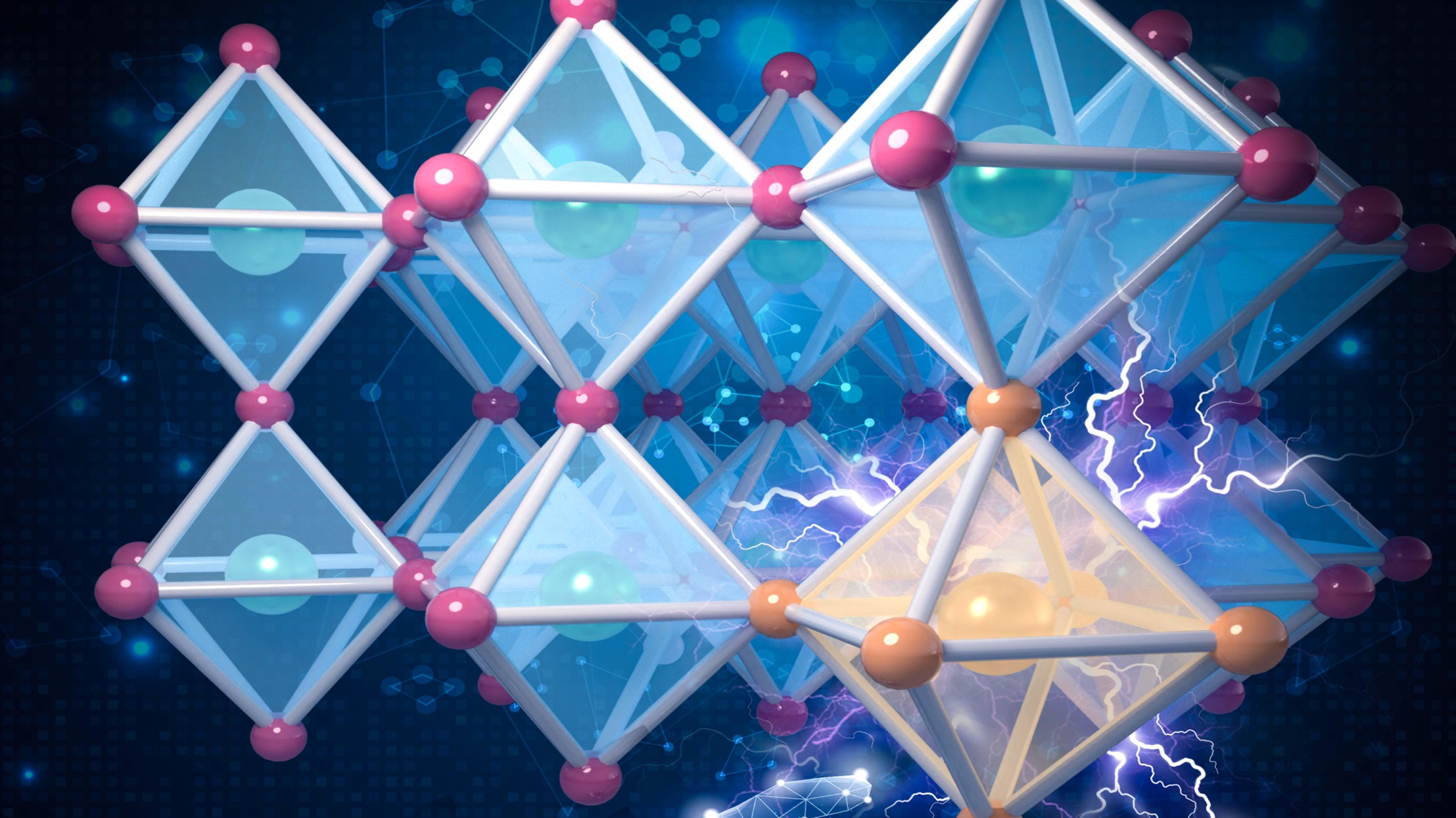
ΑΙhub.org
Machine learning accelerates discovery of solar-cell perovskites
 Through the generation of a dataset of accurate band gaps for perovskite materials and the use of machine learning methods, several promising halide perovskites are identified for photovoltaic applications. Credit: H. Wang (EPFL)
Through the generation of a dataset of accurate band gaps for perovskite materials and the use of machine learning methods, several promising halide perovskites are identified for photovoltaic applications. Credit: H. Wang (EPFL)
By Nik Papageorgiou
As we integrate solar energy into our daily lives, it has become important to find materials that efficiently convert sunlight into electricity. While silicon has dominated solar technology so far, there is also a steady turn towards materials known as perovskites due to their lower costs and simpler manufacturing processes.
The challenge, however, has been to find perovskites with the right “band gap”: a specific energy range that determines how efficiently a material can absorb sunlight and convert it into electricity without losing it as heat.
Now, an EPFL research project led by Haiyuan Wang and Alfredo Pasquarello, with collaborators in Shanghai and in Louvain-La-Neuve, have developed a method that combines advanced computational techniques with machine-learning to search for optimal perovskite materials for photovoltaic applications. The approach could lead to more efficient and cheaper solar panels, transforming solar industry standards.
The researchers began by developing a comprehensive and high-quality dataset of band-gap values for 246 perovskite materials. The dataset was constructed using advanced calculations based on hybrid functionals – a sophisticated type of computation that includes electron exchange, and improves upon the more conventional Density Functional Theory (DFT). DFT is a quantum mechanical modeling method used to investigate the electronic structure of many-body systems like atoms and molecules.
The hybrid functionals used were “dielectric-dependent,” meaning that they incorporated the material’s electronic polarization properties into their calculations. This significantly enhanced the accuracy of the band-gap predictions compared to standard DFT, which is particularly important for materials like perovskites where electron interaction and polarization effects are crucial to their electronic properties.
The resulting dataset provided a robust foundation for identifying perovskite materials with optimal electronic properties for applications such as photovoltaics, where precise control over band-gap values is essential for maximizing efficiency.
The team then used the band-gap calculations to develop a machine-learning model trained on the 246 perovskites, and applied it to a database of around 15,000 candidate materials for solar cells, narrowing down the search to the most promising perovskites based on their predicted band gaps and stability. The model identified 14 completely new perovskites, all with band gaps and high enough energetic stability to make them excellent candidates for high-efficiency solar cells.
Reference
High-quality data enabling universality of band-gap descriptor and discovery of new photovoltaic perovskites, Haiyuan Wang, Runhai Ouyang, Wei Chen, Alfredo Pasquarello, Journal of the American Chemical Society, 2024.
tags: Focus on affordable and clean energy, Focus on UN SDGs








